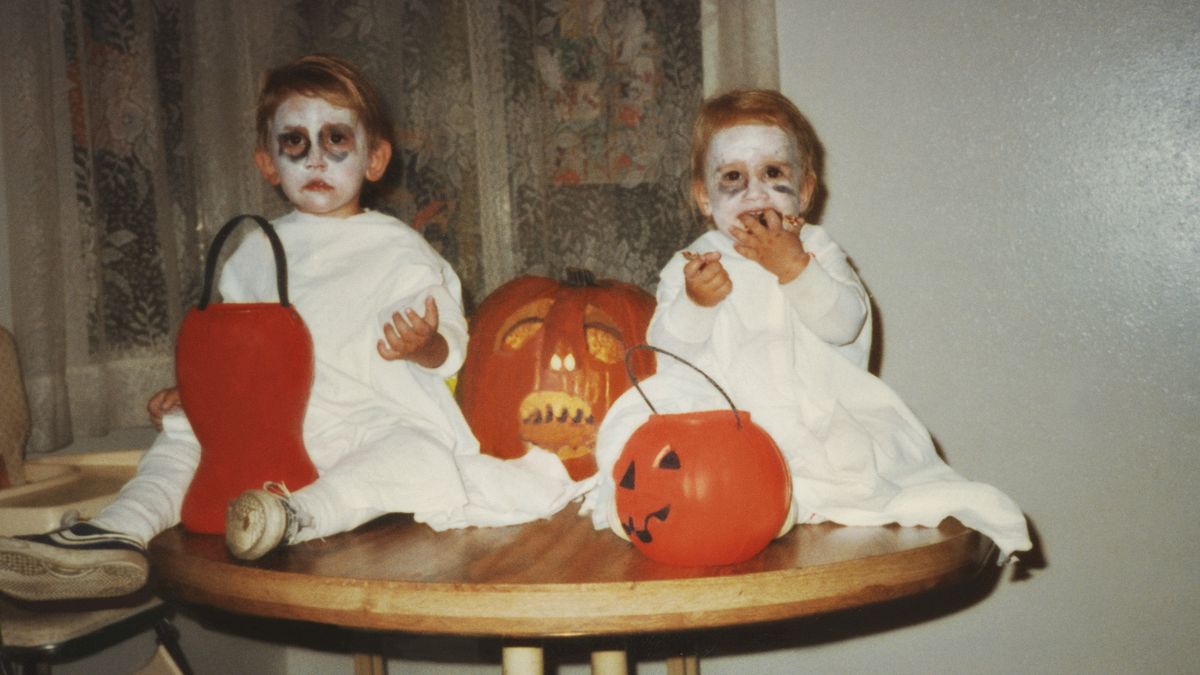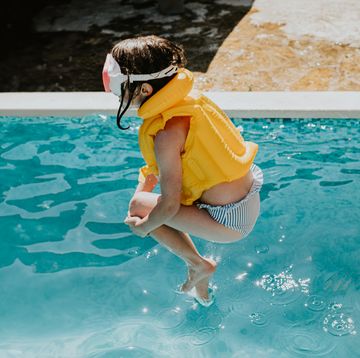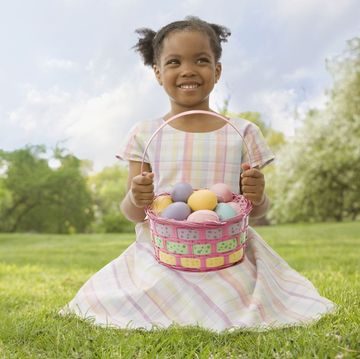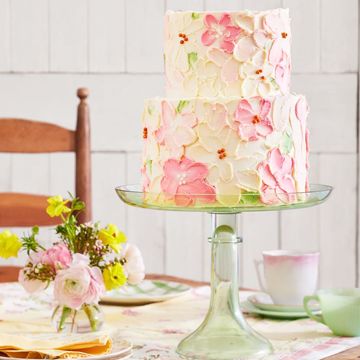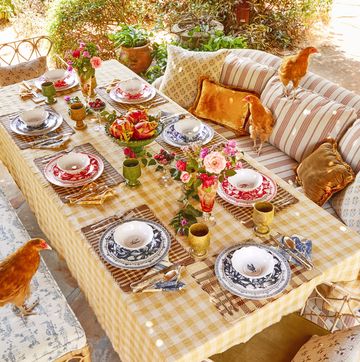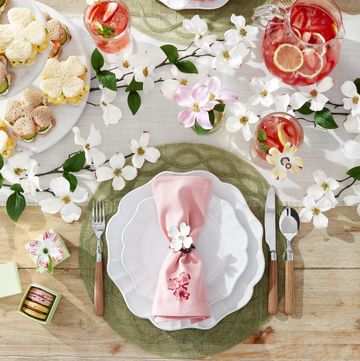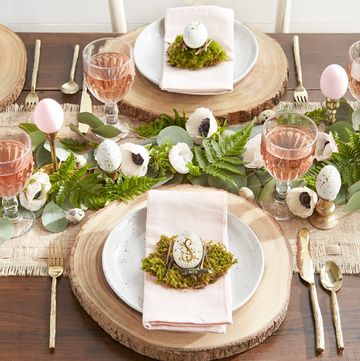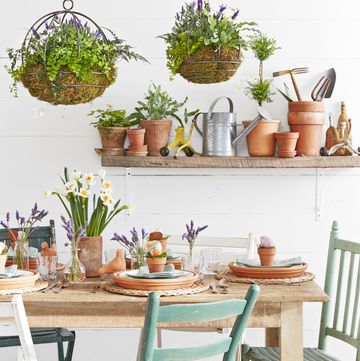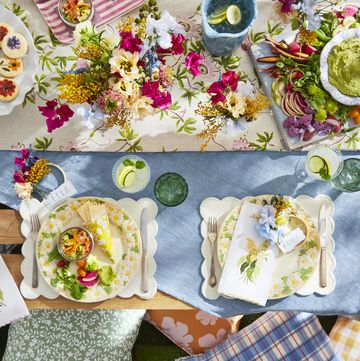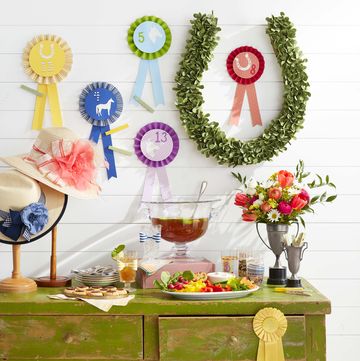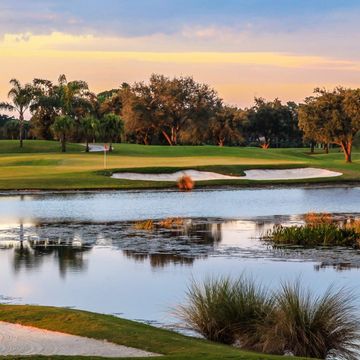11916
 Getty Images
Getty ImagesThe holiday we know and love as Halloween got its roots from the Celtic festival of Samhain, during which folks would light bonfires as a way to ward off spirits before All Saint's Day on November 1. Both Samhain and All Saint's Day eventually began merging with All Souls' Day, a day designed by the Catholic church in 1000 AD to honor the dead each November 2, when people dressed up as devils, angels, and saints. However, these Halloween traditions didn't make their way to America until the second half of the 19th century, and the spooky affair went on to become synonymous with parties, parade, treats, and costumes.
21917
 Getty Images
Getty ImagesYou're probably accustomed to buying your own Halloween costume every year, but up until the late 1940s, most holiday celebrators handmade their own creations. Today, market prices for vintage costumes in mint condition run the gamut from $75 to $1,500 for cartoon characters, television stars, or political subjects.
31918
 Getty Images
Getty ImagesSome of the most sought-after Halloween collectibles? Vintage invitations and place cards. Most were tossed after use, making them incredibly rare. Because of this, a complete set of World War I–era die-cut invites by a paper purveyor like Dennison of Massachusetts can cost $200 to $300 if never addressed.
Advertisement - Continue Reading Below
41919
 Getty Images
Getty ImagesIn 1919, Ruth Edna Kelley wrote The Book of Halloween, which still remains one of the greatest historic accounts of the holiday. Formatted with poems, games, and folklore, it's a must-read for anyone wanting to get the full Halloween backstory up to the modern era.
51920
 Getty Images
Getty ImagesHalloween decoration–lovers, you can trace this popular American custom back to 1920 when Pennsylvania-based company Beistle Company introduced a hair-raising line of party goods that helped popularize the tradition.
61921
 Getty Images
Getty ImagesHalloween parties gained major traction in the 1920s, reaching peak popularity in the '30s. Planning for these elaborate fêtes would sometimes kick off as early as the summer before, usually in August.
Advertisement - Continue Reading Below
71922
 Getty Images
Getty Images"From 1909 through the '30s, the Dennison Manufacturing Company published Halloween-themed craft and party idea books called Bogie Books," says Halloween antique expert Bruce Elsass. One such popular Halloween prop inspired by the books was a pumpkin parade stick, which was originally lit by a candle and carried by children while trick-or-treating.
81923
 Getty Images
Getty ImagesBy the 1920s, Halloween had become synonymous with mischief, which young people used as an excuse to break windows or damage property. In 1923, the police chief commissioner in Omaha, Nebraska, went so far as to designate the city's "worst boys" as junior police officers on October 31 and relied on them to report criminal behavior in an attempt to curb vandalism.
91924
 Getty Images
Getty ImagesCommunities continued to go to great lengths in order to prevent petty crimes on Halloween night. In 1924, for example, an announcement in the Chicago Tribune from Oct. 29 advertised a party at the Chicago Boys' Club so that youngsters could "enjoy themselves without destroying property or playing pranks on their neighbors."
Advertisement - Continue Reading Below
101925
 Getty Images
Getty ImagesHalloween party guests in the 1920s enjoyed games like a pumpkin ring toss as a form of good old-fashioned entertainment. Apple bobbing was also a popular pastime—one lost tradition on October 31 even involved women secretly marking the apples before throwing them in the tub for men to "bob" for; future matches were foretold depending on the apple each lad chose.
111926
 Ryan Benyi
Ryan BenyiBy the late 1920s, homemade costumes—particularly clowns—were still a popular choice. Pictured here is a homemade clown costume with sheer netting ruffle and original fabric.
121927
 Getty Images
Getty ImagesThe first known printed reference to "trick-or-treat" appeared in the Alberta Canada Herald on Nov. 4, 1927, according to Smithsonian.
Advertisement - Continue Reading Below
131928
 Brian Woodcock
Brian WoodcockFrom 1928 to 1931, the Pennsylvania-based company Beistle crafted cardboard fortune-telling games as Halloween party entertainment. With questions including "Will I soon be engaged?" and "Does my employer like me?" early Beistle games like a 1930s Mystery Answer Board Game—valued at $300—were marketed to adults. Another 1930s favorite, the Flaming Fortune Game, which also served as a table centerpiece, is a fairly common find but remains very popular with collectors.
141929
 Brian Woodcock
Brian WoodcockProne to damage—it's very rare to find an example with an intact arch—this 1929 honeycomb witch and cauldron from Beistle originally came in three different sizes. This—the middle-sized version—stirs up an impressive value of $350.
151930
 Brian Woodcock
Brian WoodcockCommonly placed on front doors or in coat closets, this wiggly, 55-inch-long fellow was introduced by Beistle in the 1930s and, depending on condition, can wrangle up to $75. When complete with original envelope packaging (not pictured), the price increases by more than a few bones to $150. Made of tissue paper and card stock, the 1930s mini lanterns sitting on the side table are valued at $45 each.
Advertisement - Continue Reading Below
161931
 Brian Woodcock
Brian Woodcock Beistle Company also created an array of hats and masks for revelers. With little wear and intact paper fringe, these 1930s orange crepe-paper hats—part of a set of six—garner around $15 each.
171932
 YouTube/screenshot
YouTube/screenshotThis rare 8mm film, converted to HD in 2013, depicts students of Hamlin Park School in Buffalo, New York, dressed in costume for Halloween 1932. In it, we see girls in Dutch and Colonial-era dress; boys suited up like sailors, pirates, and cowboys; and both genders masquerading as clowns.
181933
 Getty Images/Hulton Archive
Getty Images/Hulton ArchiveThe '30s are considered to be the Golden Age of monster movies, with Dracula and Frankenstein appearing in cinemas in 1931, and King Kong and The Invisible Man in 1933. The horror classic The Bride of Frankenstein debuted in 1935.
Advertisement - Continue Reading Below
191934
 H. Armstrong Roberts/ClassicStock/Getty Images
H. Armstrong Roberts/ClassicStock/Getty ImagesMickey Mouse, who made his official debut in the 1928 animated short Steamboat Willie, became a popular character costume in the 1930s. This image appeared in the Halloween 1934 edition of the once-popular family newspaper Grit.
201935
 Getty Images
Getty ImagesThe Dionne quintuplets— the first set to survive more than a week—were born in May 1934 in Ontario, Canada, and instantly became a worldwide sensation. Fearing their impoverished parents wouldn't be able to protect them from exploitation, the government placed the baby girls in a special hospital; their mother, Oliva, fought for nine years to regain custody. Here, actress Lucille Ball (front and center) and a group of friends dressed as the quintuplets for a 1935 Halloween party.
Advertisement - Continue Reading Below
Advertisement - Continue Reading Below
Advertisement - Continue Reading Below
